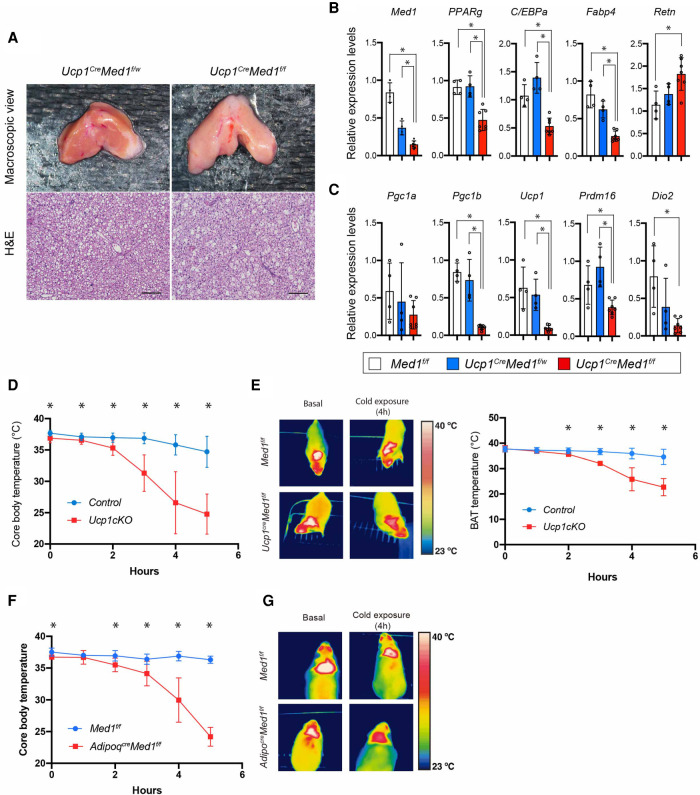Figure 5.
MED1 is required for BAT function (thermogenesis) in adult mice. (A, top panel) Representative macroscopic images of BAT isolated from Ucp1CreMed1f/w and Ucp1CreMed1f/f mice. (Bottom panel) H&E staining of paraffin sections of BAT are shown. Scale bars, 100 μm. (B,C) qRT-PCR analysis of Med1 as well as pan-adipose gene (B) and BAT-related gene transcripts (C) in BAT isolated from Med1f/f (n = 4), Ucp1CreMed1f/w (n = 4), and Ucp1CreMed1f/f (n = 6) mice. Note that the majority of genes do not show a difference between Med1f/f and Ucp1CreMed1f/w mice. 36B4 mouse mRNA is used as an internal control (mean, ±SD; unpaired t-test) (*) P < 0.05. (D) Core body temperature changes in control and Ucp1CreMed1f/f mice upon acute cold challenge (room temperature to 4°C). Both Med1f/f and Ucp1CreMed1f/w are used as controls. Data from both males and females are combined and presented together. (E, left) Thermography image of BAT region of control and Ucp1CreMed1f/f mice before and after 4 h of cold challenge. (Right) Measurement of BAT temperature of control and Ucp1CreMed1f/f mice by wireless probe during the cold exposure. (F) Core body temperature changes of Med1f/f and AdipoqCreMed1f/f mice upon acute cold challenge (room temperature to 4°C). In D–F, mean, ±SD; unpaired t-test. (*) P < 0.05. (G) Thermographic images of BAT regions of Med1f/f and AdipoqCreMed1f/f mice before and after 4 h of cold challenge.

